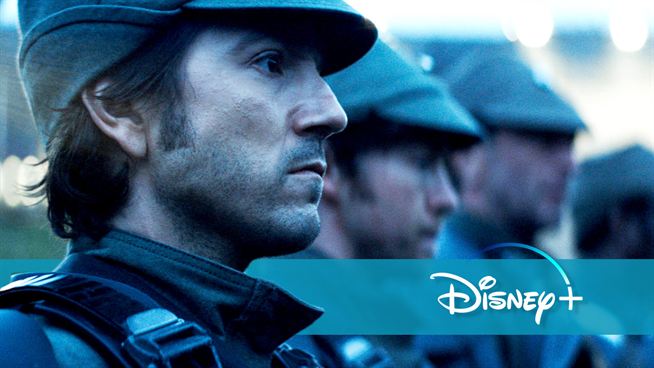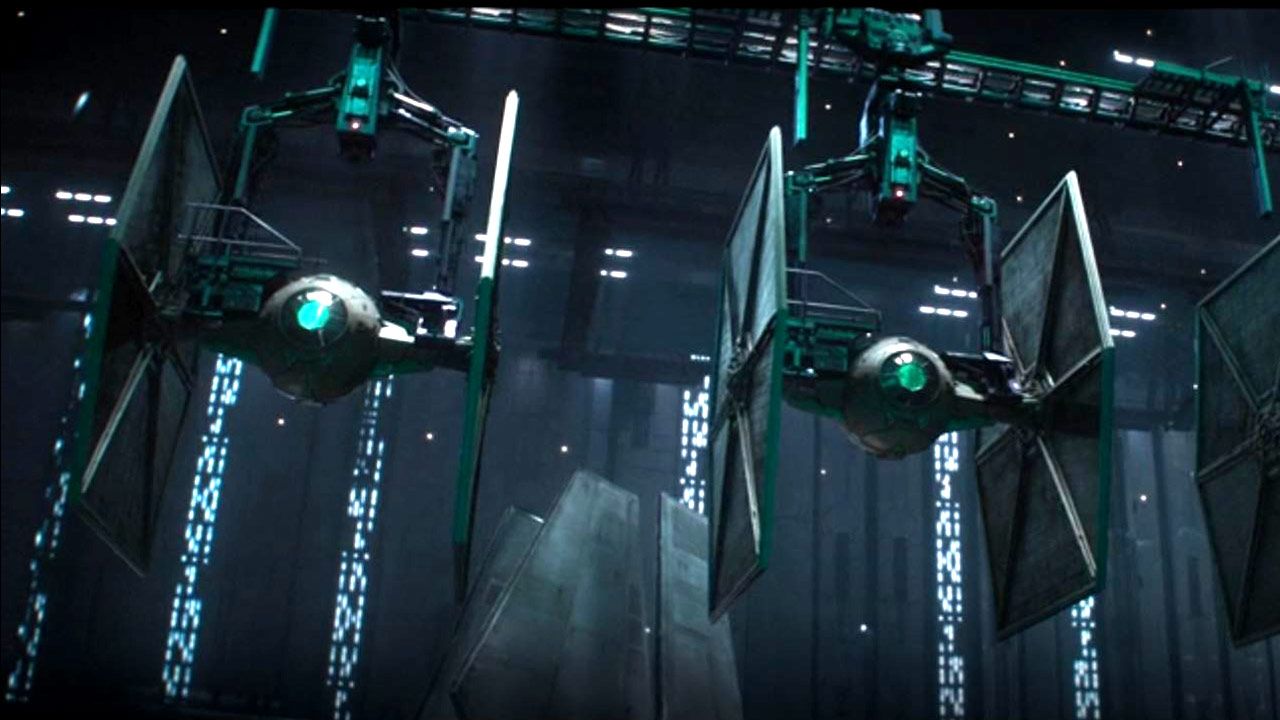
+++ Opinion +++
Being a fan of a major franchise can be quite depressing at times. I love the core of Star Wars, the rich universe, the philosophical superstructure, the iconic designs and legendary compositions. But much of what has been added to the star saga in film and serial form in recent years has led me to stray into the dark side of the power. I’ll be honest: All in all, the sequel trilogy is an absolute disaster from which my “Star Wars” love will probably never recover, and the Disney+ series “Obi-Wan Kenobi” also gave me more frustration than joy. Yet “Andor” made me completely forget about all my negative feelings for “Star Wars” for about 45 minutes.
›› “Star Wars: Andor” on Disney+*
Episode 6 of the Rogue One prequel series gripped me from start to finish, raving about complex characters, astonishing me with an audiovisually stunning spectacle and making my heart beat faster with its thrilling heist plot.
After this episode at the latest I can say: I love “Andor”! But with this realization, another thought breaks ground: If Star Wars can be so damn good, why has Disney been spewing such gigantic shit all these years? I’ve found three reasons for this, but before I get into that, let’s bask in the genius of Andor. Not only because it makes Disney’s failures all the more obvious, but because it’s just plain good!
I old “Star Wars” groan just can’t find anything to criticize in the current episode. The heist was thrilling, understandably staged down to the tiniest detail, and the entire Rebel crew was well established in the two episodes beforehand, so I was really curious which one of them would make it out alive. In addition, the setting really impressed me: No more lame desert planets. When a robbery takes place in “Andor”, a beautiful star shower awaits us, with the indigenous Dhani tribe warming the atmosphere with ceremonial chants.
The natural spectacle is more than eye candy, but an essential part of the rebel tactics. The acting is convincing, even small things like the imperial commander’s overweight belly have a deeper meaning and the twist at the end of the episode makes sense in retrospect, but still manages to surprise. Moreover, “Andor” shows once again that there is not only good and evil in the “Star Wars” universe. When Rebels threaten a kid’s life to get their hands on a pile of cash, the end may justify the means, but then they’re not smart heroes, either.
“Andor” is so fascinating because every interaction between the characters is well thought out, every plot detail is believable, and every motivation is understandable. Compare that to episode 4 of “Obi-Wan Kenobi‘, where an Imperial base is also invaded, but there is no tension whatsoever as all logic is thrown overboard. But how do these striking quality differences come about?
If there’s one thing that’s really bugged me about “Star Wars” over the past few years, it’s the pushy fan service: Will Star Wars aficionados really benefit if iconic characters like Boba Fett and Obi-Wan are brought back to experience only more uninspired adventures? Was it really worth reviving Emperor Palpatine and ruining the finale of the original trilogy? Should every goddamn series have Skywalkers? I do not think so.

Almost all Disney “Star Wars” projects seem to have asked the question at the outset: What familiar characters do we use to attract the most people to the cinema or Disney+? Whether it makes sense to bring them back and whether an interesting story with added value can even be told based on that, seemed secondary.
Not so with “Andor,” which largely forgoes fan service and focuses on an already well-known but not particularly popular “Star Wars” character with Cassian Andor (Diego Luna). But that’s exactly what takes the pressure off of having to live up to the expectations of millions of individual fans. Unlike Obi-Wan or Boba Fett, most fans didn’t care about Andor. This allowed the creators around Tony Gilroy to focus on simply implementing their own creative vision without risking developing an iconic ‘Star Wars’ character in an undesirable direction.
Granted, there’s also a Bantha stuffed animal here and someone is pouring himself blue milk. But in a universe where banthas exist and milk is blue, it feels completely natural and to some degree necessary to even convey that we are in the Star Wars universe. It’s flat Mediocre fan service that lets us enjoy the story and doesn’t keep distracting us with unnecessary cross-references.
The second glaring problem of the Disney era is the time pressure that often arises behind the scenes. After “Star Wars 8” unleashed a gigantic shitstorm (in part because, as mentioned above, an iconic character was developed in an undesirable direction), those responsible for “Star Wars” around Kathleen Kennedy fell into rushed actionism. Instead of taking the time to analyze past mistakes and maybe give yourself another year to find an Episode 9 resolution that reconciles Star Wars 7 and Star Wars 8 fans, the original plans completely destroyed yet stubbornly stuck to the targeted theatrical release.
Colin Trevorrow, who had to direct and had already written a screenplay, was reflexively replaced by “Episode 7” director JJ Abrams, who had to massively rewrite the script and direct “Episode 9” in a very short time. The sequel trilogy finale was completely redesigned, with only two years left until the theatrical release, which is simply not enough for a blockbuster of this kind with an effect-heavy post-production.
The lack of time is really noticeable in the final film. For example, the return of Emperor Palpatine, presumed dead, was covered in the intro text and Poe only briefly commented with the words “Somehow Palpatine has returned.” No satisfactory explanation, no finesse: It seems like the very first draft of the script was approved because there was simply no time to work out the finer points.
Obi-Wan Kenobi has a similar problem: the script has logic holes like Swiss cheese, which is probably also due to time constraints and a massive rewrite of the original script. An Obi-Wan movie had been in the works for years, but then suddenly a Disney+ series had to be made and the story had to be artificially extended. Add to that the sometimes shockingly cheap-looking CGI, which is probably also due to the lack of time that visual effects companies often suffer from these days.
I was all the more amazed at how much better the CGI looks in “Andor” and how watertight the script is. No annoying logical hole continuous fire, that’s also the most powerful to burst, no raw spaceship animations that look like they’re straight out of a last-generation video game. Compared to Disney’s previous “Star Wars” products, “Andor” looks well thought out from start to finish and the effects are again significantly more polished than “Obi-Wan Kenobi”. The prequel “Rogue One” was announced four years ago and apparently Gilroy and his team took all the time they needed to get the best possible result, not the fastest possible.

Disney is the entertainment company par excellence and it is no wonder that, with few exceptions, it designs its movies and series as pure entertainment products without any deeper meaning. Even “The Mandalorian” suffers from this, a series that I really like, but in the end nothing sticks to it except cool designs and a bit of green alien.
But George Lucas’s Star Wars is more than just entertainment. This man wanted to say something about human nature, about the eternal struggle between good and evil, between selfishness and altruism, which always takes place in all of us. Very rudimentary, simple, but above all correct thoughts, which are packaged extremely attractively in “Star Wars”. But Disney doesn’t care.
Rian Johnson was the only one who dared to think beyond the deeper Lucasian level of interpretation with his “Episode 8”, but he went a bit too far and was severely punished by loud fans for doing so. Since then, “Star Wars” has been a pure brain-out product. That works for a Boba Fett who doesn’t take himself too seriously anyway, but it fades into oblivion in an Obi-Wan Kenobi that focuses on drama.
“Andor” finally offers some food for thought again. This, of course, happens most clearly through the rebel Nemik (Alex Lawther), who even writes a political manifesto. But the diverse, ambivalent and understandable motives of the individual characters alone compel us to make our own moral judgments. “Andor” shows the decadence and hubris of the empire, as well as the brutal methods of the rebels. The alleged hero shocks us with his quick finger on the trigger and a supposed villain takes pity on us for losing his job. Even frigid opportunists with no ideals find their place in Andor.
For showrunners Tony Gilroy it was always secondary that “Andor” is a “Star Wars” series. He just wanted to discover what motivates a pragmatic lone fighter like Cassian to become a rebel willing to sacrifice his own life for a greater cause – and make it a standalone series to watch.
For a long time I felt that as a Star Wars fan I was nothing more to Disney than a dollar sign in the eyes of Kathleen Kennedy. “Andor” gives me hope that well-thought-out, in-depth stories that are independent of fan service will still have a chance at Disney. As a viewer, I finally feel like “Star Wars” is being taken seriously again.
Author: Benjamin Hecht
Source : Film Starts
I’m Jamie Bowen, a dedicated and passionate news writer for 24 News Reporters. My specialty is covering the automotive industry, but I also enjoy writing about a wide range of other topics such as business and politics. I believe in providing my readers with accurate information while entertaining them with engaging content.







